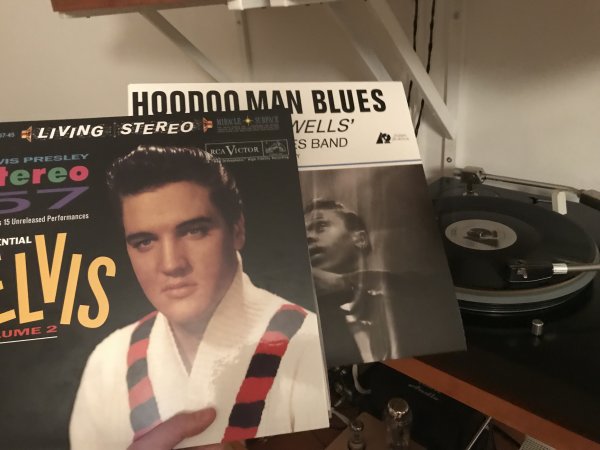Hold on: the record doesnt slip due to static friction.
The phenomenon can be observed for example if you put a book on a table and you try to push it. You’ll need to a force larger than the static friction to get it to move at all.
Once it moves you’ll actually need less force.
This is because the dynamic friction is less than the static.
You can also attach a rubber band to the book and then pull the book by the rubber band. You’ll see that you need a certain strech of the rubber band before the book moves. When it moves the rubber band will strech less.
The reason for using a clamp on your turntable is primarly to dampen resonances generated by the needle when playing the record, and secondly to flatten it to make the job easier for cartridge and arm.
The reason for not using it, is that the closer the connection is between record and platter the more risk you have of transmitting noise from the driving mechanics (bearing, motor, idler etc)to the needle.
Something maybe worth trying marc: place a hard platter (carbon, wood, metal) on top of the delrin cones, then a soft platter on top of that, and then the record.
Keep it coming!
Jesper
The finger test is with the LP playing, just touch the outside of the rim of the LP and see if it slips. The drag of a stylus seems too light to do anything, but it isn't... There is 2 grams on it at least (typical).
And actually weights often make the record more stiff so they don't dampen anything really. They can even give a better reflection point. But if they make your LP couple to the platter better then you're changing the resonances behaviors by combining the LP and platter as if they're one. The issue is that when you make it stiffer and also make the LP want to bend up, you're pretty well make a direct path to a hard object. DDK made a platter with a tiny concave pattern to accommodate the change in shape a weight often creates, to couple the two better - very smart avoids the whole issue.
So the type of mat you use, the LP cut out pattern, etc, affect the response of how the weight effects the whole thing.
The most slip will be between a belt drives "belt" and whatever it's on. But if you have a heavy platter, again, it probably only adds a sonic signature that many want.
and all this platter-pressing interface talk must include platter composition. how does the platter material interface with a pressing?
i know the team that designed my NVS tt spent lots of time doing research on platter materials and found what they felt was the most sympathetic material to the pressings. it's some sort of resin composite. not saying it's better or worse than other materials, but it certainly could make a difference.
and obviously this platter material is part of dampening dd motor resonance....as it's all one connected system.
The platter itself is a double edged sword. On one side it interacts with the LP. So you have to consider how well it couples with it. But also does it reflect the sound generated by the stylus through the LP? Does it absorb it? Does it dampen it because it's coupling decently? That's all one side. The second side is how much does it transmit from the motor side? Does it dampen motor noise? In the NVS case I'd guess that it dampens the motor noise real well, and dampens some of the record but only so much as it can couple. It probably reflects a tiny amount. It should be given the finger test. Either way a weight will increase coupling which helps reduce reflections and dampen a lot. But as said before depending on the record and shape of the weight, you can get variable coupling since LP's sometimes how their true nature the second you apply any force on top of them.
The Saskia isn't coupling much, and the record weight doesn't do anything as you've noted. Part of that is because it's lifted that tiny hair off the platter by rubber. That rubber dampens but not much, and mostly only locally. If you take them out the record can completely couple and the weight will stop any micro slipping (rubber does, too). But the platter is reflective as is, but is probably plenty heavy enough that it's beyond the resonance of the motor so it doesn't really transmit from the idler wheel that's self damped.
What I'd say is important is not to conclude anything is negative right away. I promise that a LOT of people on here actually really like the sound of certain reflections, resonances, over-shoot, etc.. I mean it's fact, really. The most important thing is how you like the sound. If a TT has a character that's appreciated, it's not that important whether it sounds negative or positive when described.
Let me illustrate one of many examples of what we often like.. Copper platters/platter mats. They're reflective, not amazing at coupling, bad at damping (better than some metals though), but we like them! There's no reason to stress on the words we use to describe what's going on, if the results are great.








